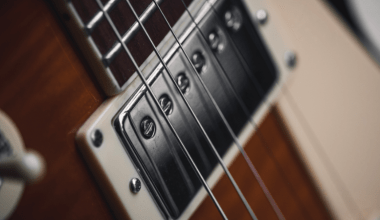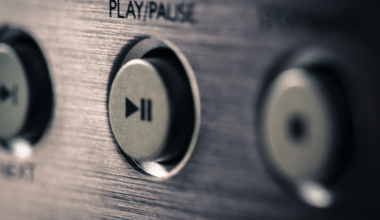If you’re a musician or part of a band, you’ve probably heard the term “press kit” tossed around. A press kit, also known as an Electronic Press Kit (EPK), is essentially your musical resume. It’s a package of materials designed to showcase your talent, achievements, and style to industry professionals such as promoters, journalists, booking agents, and labels.
Think of it as your all-in-one promotional tool. A well-crafted press kit can open doors to new opportunities, helping you secure gigs, press coverage, and collaborations. But what exactly should a music press kit include? Let’s break it down.
Why Do You Need a Music Press Kit?
Before diving into examples, it’s important to understand why a press kit is essential for musicians. In today’s highly competitive music industry, standing out is no small feat. A professional press kit not only sets you apart but also makes it easier for industry professionals to learn about you. It saves them time and shows you’re serious about your craft.
Additionally, an EPK streamlines communication. Whether you’re pitching to a music blog or negotiating with a venue, having all your information readily available can speed up the process. Now that we’ve covered the “why,” let’s explore some practical examples and key elements.
Key Elements of a Music Press Kit
1. Biography
Your bio is often the first thing people read in your press kit. It should be engaging, concise, and informative. Share your story, highlight key achievements, and describe your music style. For example:
Short Bio Example:
“Hailing from Nashville, indie-folk artist Jane Doe combines heartfelt lyrics with soulful melodies. Her debut album, Whispering Winds, climbed to #10 on the Billboard Indie Charts.”
2. High-Quality Photos
Visuals play a huge role in capturing attention. Include professional, high-resolution images that reflect your brand. Consider headshots, live performance shots, and even creative promotional images.
Photo Tip: Use a consistent color palette or aesthetic to make your press kit visually cohesive.
3. Music Samples
Showcase your best work by including links to your music. Platforms like SoundCloud, Spotify, or YouTube are great options. Make sure your samples highlight your versatility and musical strengths.
Example: Include a playlist of your top three tracks to give listeners a quick sense of your style.
4. Press Coverage
Have you been featured in a music blog or magazine? Include quotes, links, or excerpts from reviews. Positive press adds credibility and shows that others in the industry value your work.
Your online presence is crucial. Include links to your most active social media platforms, such as Instagram, TikTok, or Twitter. This allows promoters and journalists to see how you engage with your audience.
6. Contact Information
Make it easy for people to reach you. Provide an email address, phone number (if comfortable), and links to your official website or booking page.
Examples of Great Music Press Kits
Example 1: Indie Band Press Kit
Band Name: The Echo Waves
Bio: The Echo Waves, an alt-rock band from Seattle, blends grunge roots with modern rock flair. Their 2023 album, City Lights, received critical acclaim from Rolling Stone.
Music Samples:
- Track 1: “Moonlit Dreams” (Spotify)
- Track 2: “Chasing Shadows” (SoundCloud)
Press Coverage:
- “A band to watch in 2024.” – Rolling Stone
Example 2: Solo Artist EPK
Artist Name: DJ Luna
Bio: DJ Luna has been lighting up dance floors worldwide with her electrifying EDM beats. Her single, Neon Nights, has over 1 million streams on Spotify.
Music Samples:
- Track 1: “Neon Nights” (YouTube)
- Track 2: “Eclipse” (Apple Music)
Press Coverage:
- “An unstoppable force in the EDM scene.” – EDM Magazine
Tips for Creating an Impressive Press Kit
- Keep It Simple: Avoid overwhelming your audience with too much information. Stick to essentials.
- Update Regularly: As your career evolves, so should your press kit. Add new achievements, music, and press coverage.
- Use a Consistent Design: A clean, professional design reflects your brand and makes your press kit more appealing.
- Leverage Online Tools: Platforms like Canva offer free templates for designing press kits. Additionally, websites like Sonicbids and ReverbNation help musicians build EPKs.
Where to Host Your Press Kit
Your press kit should be easily accessible. Here are some popular options:
- Your Website: Create a dedicated page for your EPK.
- Google Drive or Dropbox: Share a link to a downloadable version.
- EPK Platforms: Use specialized tools like Sonicbids or PressKitHero.
Common Mistakes to Avoid
- Poor Quality Photos: Grainy or unprofessional images can hurt your brand.
- Outdated Information: Ensure your press kit reflects your current achievements and music.
- Missing Contact Details: Always double-check that your contact info is correct.
Final Thoughts on Press Kit Music Examples
A great music press kit is more than just a collection of materials—it’s your chance to tell your story and make a lasting impression. Whether you’re just starting out or looking to take your career to the next level, investing time in creating a compelling press kit can make all the difference.
Remember, the key is to showcase your unique style and make it easy for industry professionals to see why you’re worth their time. Use the examples and tips provided here as a guide, and don’t forget to let your personality shine through. Good luck.
For further reading, explore these related articles:
- Understanding Musician Terms: A Friendly Guide to Music Lingo
- The Powerful Bond Between Music and Lyrics
For additional resources on music marketing and distribution, visit DMT Records Private Limited.






